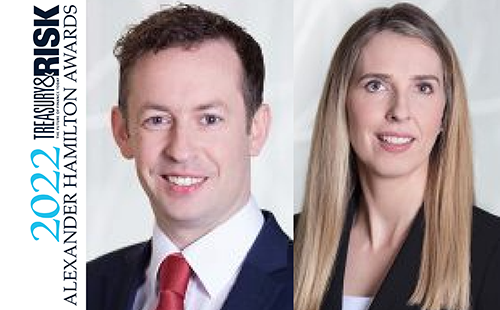
Anyone who's familiar with the Uber Technologies origin story knows that, for the past several years, the company has been growing at a pace that its founder has described as 'unprecedented.' At the start of 2015, Uber operated in 25 countries. By mid-2018, its ride business served more than 50 countries, and the company had expanded into related markets including food delivery, freight hauling, and bicycles and scooters. Uber provided its billionth trip at the end of 2015 and then reached its 10 billionth trip by 2018.
The Uber treasury group supported this skyrocketing growth by allowing some functions to become decentralized. The company handles certain types of transactions via a collect-on-behalf-of (COBO) and pay-on-behalf-of (POBO) model, but local support entities in each region manage transactions around payroll, operating expenses, and tax payments. In building out these regional groups, Uber sometimes found standardization falling by the wayside.
"The challenge was making sure we had bank account infrastructure in place so that the businesses could launch," says Carolyn Hansen, senior treasury manager at Uber. "We sometimes chose the quick solution, versus a more automated or scalable solution." As a result, the company ended up with manual processes for determining liquidity levels in business units around the world.
"We have a monthly cost-plus process," Hansen explains. "Under these agreements, local entities will receive a monthly intercompany settlement from specified corporate entities, and we need current balance and payment information to support decisions about whether each entity should receive that monthly funding. In addition, we need to be sure we have sufficient funding for partner payments, which include earners on our platform—drivers, couriers, restaurants, and carriers." For all these reasons, treasury staff were spending a lot of time logging into bank portals to check on balances, to see whether payments had gone out and collections had been received.
To improve the efficiency of a number of processes, including cash positioning, Uber undertook a major upgrade of the finance and treasury functions' technology infrastructure. The goals were threefold: to improve visibility into balances and control of accounts, to standardize and automate payment processing around the world, and to ensure that all systems would be scalable to various volumes of payments.
 Uber deployed a new Oracle enterprise resource planning (ERP) system and a treasury management system from Kyriba. The company's technology group built an internal payments engine to manage payments to partners. Then they connected Uber's treasury workstation and ERP system, and linked both solutions to the company's banks.
Uber deployed a new Oracle enterprise resource planning (ERP) system and a treasury management system from Kyriba. The company's technology group built an internal payments engine to manage payments to partners. Then they connected Uber's treasury workstation and ERP system, and linked both solutions to the company's banks.
Now payment data flows back and forth between the banks and both systems. For Uber's handful of relationship banks, the technology group developed direct host-to-host connections between banking systems and the company's systems. "The payment rails between our banks and our ERP system enabled us to automate and standardize processing of our major payment flows," Hansen says. All payment files are transmitted in ISO 20022 format, ensuring that payment channels can be built quickly in each new market Uber enters.
Balance and transaction information flow back to both the ERP and treasury management systems. Banks with which the company has fewer accounts report balance and transaction information to the treasury management system via SWIFT reporting.
Reports from the ERP system and a dashboard in the treasury workstation inform Uber's central treasury function about cash flows around the world. "Now cash positioning is more automated," Hansen says. "We have the balances flowing into the workstation, and we have a dashboard that provides a view into our operating payments on a global basis. We also have a team that focuses only on the partner piece and funding of local support entities on a more regional basis. All this means we have a much more streamlined process for getting ahead of the daily and monthly funding requirements."
Around the same time as the software implementations, Uber's treasury team worked with their banks to deploy a global cash pooling structure and determine which countries' funds would make sense to include. Now, more than a third of Uber's accounts around the world sweep into these pools. This further reduces the burden of cash positioning on treasury staff, and it enables the company to maximize returns on those funds.
Hansen says that one benefit of the new process is improved working capital management. "We have significantly improved our working capital, especially compared with our previous environment, where we had to log in manually and download position information," she says. Uber estimates that the improvements in cash positioning have reduced its operating balances by about $400 million, which generates $2 million a year in incremental interest income.
See also:
The improved processes have also freed up more time for treasury staff to research local payment options and work with banks to further improve payment processing. All in all, Hansen says, the improvements in efficiency have generated more than $10 million a year in transactional cost savings.
Perhaps most important, the initiative has prepared the treasury team at Uber to continue supporting the company's extremely rapid growth. Hansen says that one thing other treasury teams can learn from her company's experience is that it makes sense for high-growth businesses to standardize and automate as soon as possible.
"Moving away from manual processes helps scale the business," she says. "It enables a smaller number of staff to manage treasury processes across a business that is getting larger. It's also less challenging to launch new entities when you have a standard approach, versus an approach that changes on a case-by-case basis for each new business."
© Touchpoint Markets, All Rights Reserved. Request academic re-use from www.copyright.com. All other uses, submit a request to [email protected]. For more inforrmation visit Asset & Logo Licensing.



